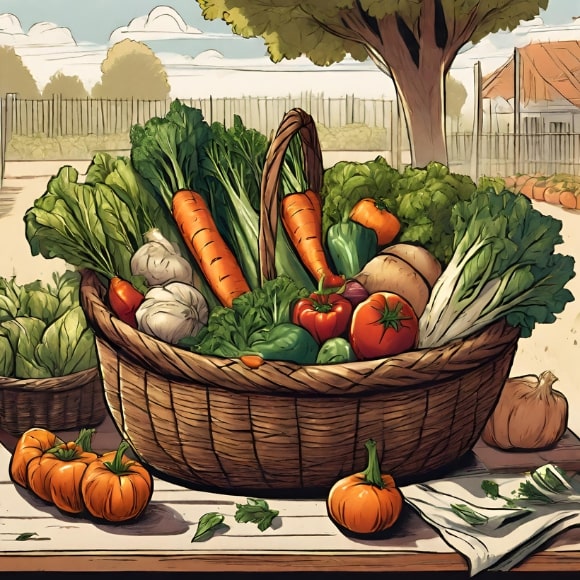
Vegetable gardening is a rewarding and fulfilling endeavor that allows individuals to grow their own fresh produce, connect with nature, and enjoy the satisfaction of harvesting homegrown vegetables. But successful vegetable gardening requires careful attention to the needs of plants and the environment where they grow. Let’s explore vegetable care basics, covering essential techniques, practices, and tips for tending to vegetables and maintaining a thriving vegetable garden.
Site Selection and Preparation
Selecting the right location for your vegetable garden is essential for the success of your crops. Choose a site that receives at least 6-8 hours of direct sunlight per day, as most vegetables require ample sunlight for optimal growth and productivity. Also, make sure the site has well-drained soil and good air circulation to prevent waterlogging and reduce the risk of disease.
Before planting, prepare the soil by loosening it to a depth of 8 to 12 inches and incorporating organic matter such as compost, aged manure, or peat moss to improve soil structure and fertility. Check the soil composition requirements of the vegetables you plan to plant so you can prepare the soil to give you the best chance of a successful harvest. Remove any weeds, rocks, or debris from the planting area, and level the soil surface to create a smooth planting bed.
Planting
When planting vegetables, follow spacing recommendations provided on the seed packets or plant tags to ensure adequate room for growth and airflow between plants. Plant seeds at the appropriate depth and distance apart, and gently firm up the soil around them to ensure good seed-to-soil contact. When transplanting seedlings, handle them carefully to avoid damaging roots or stems, and water them thoroughly after planting to help reduce transplant shock.
Consider companion planting techniques to maximize space and discourage pests and diseases. For example, interplanting aromatic herbs such as basil and marigolds among vegetables can help repel pests and attract beneficial insects.
Watering
Proper watering is crucial for the health and vitality of vegetable plants. Water plants deeply and thoroughly, ensuring that the soil is evenly moist but not waterlogged. Avoid overhead watering, as it can promote the spread of fungal diseases and waste water through evaporation. Instead, use a soaker hose, drip irrigation system, or watering wand to deliver water directly to the base of plants.
Water plants early in the morning to allow foliage to dry before evening, reducing the risk of fungal infections. During hot, dry weather, increase watering frequency to keep your plants from wilting and drying out.
Fertilizing
Provide plants with adequate nutrients by fertilizing regularly throughout the growing season. Use a balanced fertilizer or organic amendments such as compost, aged manure, or fish emulsion to replenish soil nutrients and promote healthy growth. Follow application rates and frequency recommendations provided on product labels, and avoid overfertilizing, as excessive nutrients can cause imbalances and damage plants.
Consider conducting a soil test to determine nutrient levels and pH before fertilizing. This can help guide your fertilization practices and ensure that plants receive the nutrients they need. Your local extension center or garden center can help you find a local soil testing service.
Mulching
Mulching is an essential practice for conserving soil moisture, suppressing weeds, and maintaining soil temperature in the vegetable garden. Apply a layer of organic mulch such as straw, shredded leaves, or grass clippings (without pesticides!) around plants to help retain moisture, reduce weed competition, and improve soil structure.
Avoid mulching too close to plant stems, as this can create a moist environment that promotes rot and disease. Instead, leave a small gap between mulch and stems to allow for airflow and to prevent moisture buildup.
Pest and Disease Management
Monitor plants regularly for signs of pests and diseases, such as chewed leaves, discolored foliage, or unusual growth patterns. Identify pests and diseases promptly and take appropriate action to control them before they become widespread.
Practice cultural control methods such as crop rotation, companion planting, and sanitation to minimize pest and disease problems. Remove and destroy affected plants or plant parts to prevent the spread of infection, and use physical barriers such as row covers or netting to exclude pests from the garden.


 Previous
Previous

